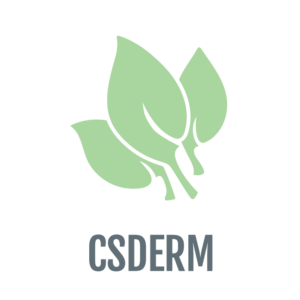Warts are a common dermatological problem estimated to affect millions of individuals. They are caused by the Human papillomavirus (HPV). The virus has numerous subtypes that can cause a variety of warts, including common warts and plantar warts. Potentially contagious, warts may spread from one body part to another since even when the wart is destroyed, the virus is not. Though many warts resolve independently, some people are plagued by annoying skin clusters. Although the virus is not cured, methods are available to remove or destroy wart tissue.
If you are bothered by a pesky or ugly wart, contact Colorado Springs Dermatology Clinic, PC, to talk to one of our dermatologists about wart removal and treatment options:

Should I have my warts treated?
Warts often disappear without treatment, particularly in children, and most are completely harmless. Unfortunately, they tend to appear on highly visible body parts, such as the hands, and many patients want to get rid of them for cosmetic reasons. If your warts hurt, do not resolve on their own, or cannot be destroyed using over-the-counter medications, you may want to schedule an appointment with your dermatologist.
How are warts removed?
Most methods of removing warts are destructive, involving the application of liquid nitrogen, acids, or blistering agents designed to remove wart tissue. Depending on the severity of the case, persistent removal efforts performed every few weeks may be required to destroy a wart. On average, warts on the hands and feet may require five to seven treatments. Your doctor may want to take a skin biopsy, particularly if the skin growth bleeds, is large, irregular, or darker than the surrounding skin, to determine if the growth is cancerous.
Hard-to-treat warts
In some cases, warts are particularly difficult to destroy or extremely numerous. Dermatologists use the following treatments to attack these stubborn cases. Patients with unusually numerous warts, flat warts, or warts that have not responded to other therapies may be candidates for more extreme treatments:
Cantharidin
The blistering agent cantharidin causes minimal discomfort, making it favored for younger children who cannot tolerate the more painful removal methods. A dermatologist ‘paints’ the wart using cantharidin, after which a blister forms under the tissue. After a week, you will have a follow-up appointment to clip away the dead wart. Anyone, including young children, is a candidate for wart removal using cantharidin.
‘Freezing’ and ‘burning’
The most common treatment for wart removal is cryotherapy or ‘freezing’ of the wart. Minimally painful, the procedure often requires repeat treatments. Another method is ‘burning’ off the wart, also known as electrosurgery. Curettage involves scraping off the wart using a sharp knife or spoon-shaped tool. Sometimes electrosurgery and curettage are used in tandem, with the wart scraped off before or after surgery. Although most patients with warts can benefit from these treatments, cryotherapy may leave behind brown spots on people with dark skin.
Laser treatment
Warts that have not responded to other procedures may respond to laser treatment. The dermatologist numbs the wart with an anesthetic injection before removing it with a medical laser.
Chemical peels
Flat warts tend to come in clusters and may be treated with a peeling medication. Prescription peeling agents, which may be applied at home, include salicylic acid, tretinoin, and glycolic acid.
Tagamet (Cimetidine)
Individuals who cannot tolerate the pain of destructive methods or who have a high number of warts may be prescribed oral Tagamet or Cimetidine. These medications are normally used to treat stomach problems, but dermatologists have had some success treating multiple warts with Tagamet, particularly in children.
More information: MayoClinic.org
Our dermatology clinic locations
We offer medical dermatology at four CSDERM locations:
Central Colorado Springs
170 Parkside Dr
Colorado Springs, CO 80910
Phone: (719) 471-1763
North Colorado Springs
2060 Briargate Pkwy, Ste 150
Colorado Springs, CO 80920
Phone: (719) 471-1763
Pueblo
406 North Main St
Pueblo, CO 81003
Phone: (719) 566-0176
Cañon City
1332 Bauer Ln
Cañon City, CO 81212
Phone: (719) 275-7485
